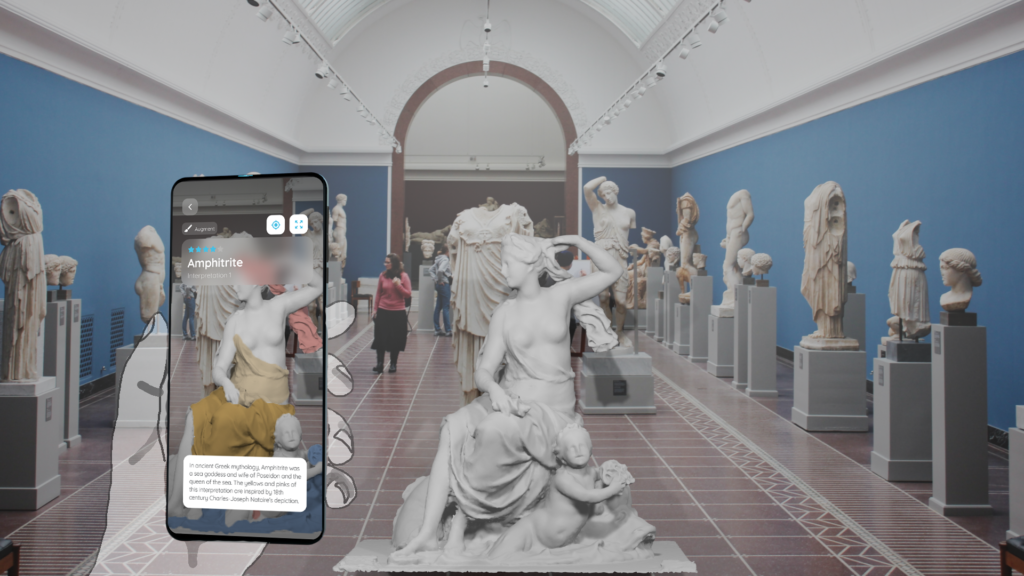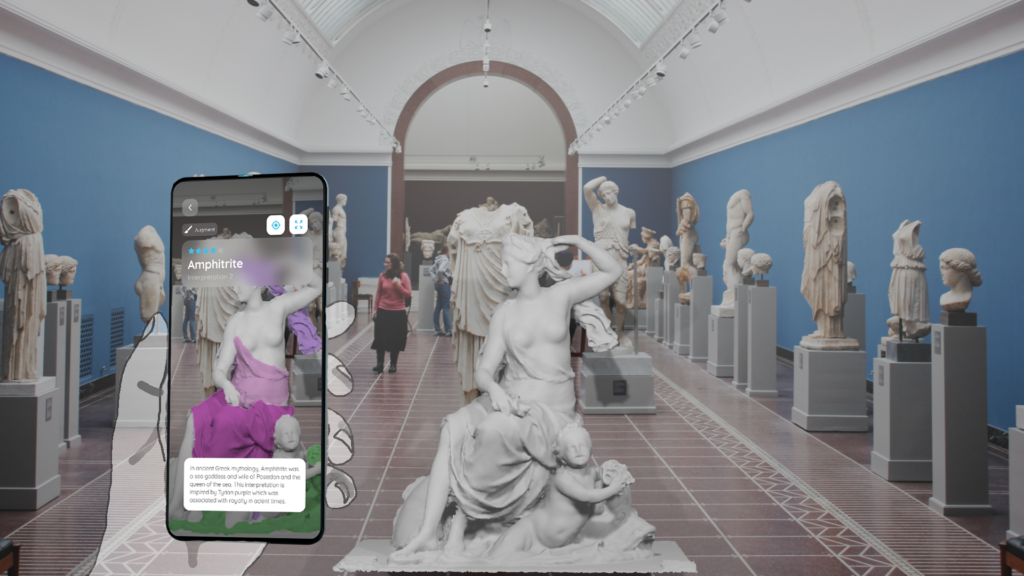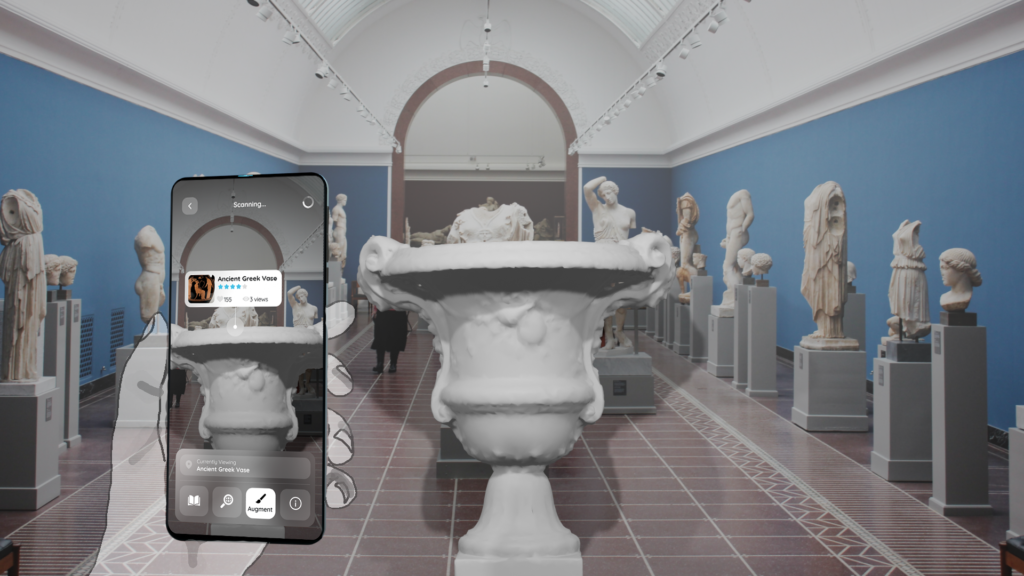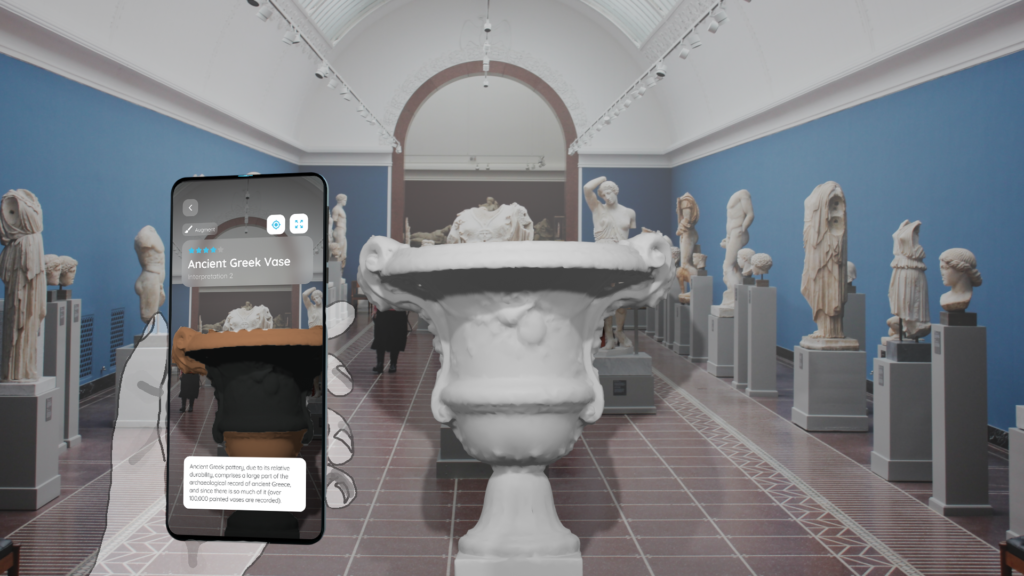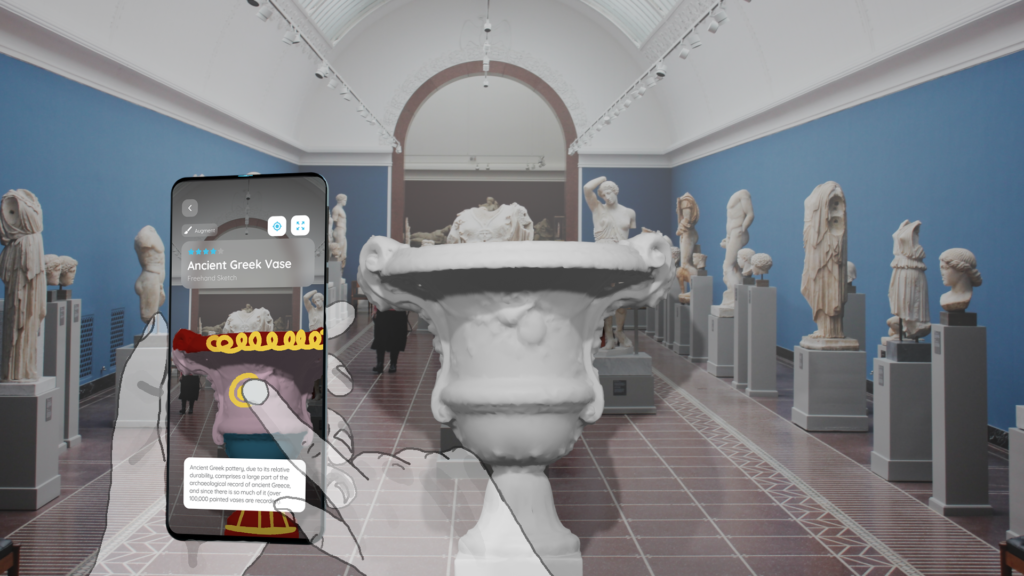
“When we look at a Greek statue or temple, we have to squint our eyes sometimes at the brilliance of the white marble. We have come to associate all Greek temples and sculptures as white. Nothing is further from the truth.”
AWT Travelogue
The Fitzwilliam Museum, Cambridge
The Fitzwilliam Museum, founded in 1816, is the art and antiquities museum of the University of Cambridge and is noted for its impressive collection of artefacts from antiquity, in particular the collection of Greek and Roman artefacts on display in Gallery 21.
A particularly notable piece on display is the marble bust of Antinous, the deified young lover of Roman Emperor Hadrian. The bust is seen standing in the centre of the gallery to the right. The young man’s head is adorned with leaves and berries, all rendered in pure white marble. However, in its own time, the bust may have been brightly multi-coloured.

What did ancient sculptures originally look like?

Bacchus was the Roman god of agriculture, wine and fertility. The images to the left show how a colourful recreation of the bust of Bacchus was created, based on the locations of pigments found on the head’s surface.
As there are no photographs from ancient times, it is important to note that this recreation is just an interpretation of how the bust may have originally looked, based on the best available evidence.
The AR app will follow the same logic.
Why did the colours fade?
“The ideal of clean white marble is now so embedded in modern culture that it can be shocking to discover just how gaudy some ancient sculpture was originally.”
Gallery 21 • Greece and Rome
Many ancient Greek and Roman artefacts lost their colour over the centuries because of natural weathering processes and because of damage caused by cleaning by collectors and restorers.
However in some cases it is still possible to find small traces of the original colour pigment on the white marble, and this gives us a clue as to how the original artefact may have looked.
Introduction to the prototype application user interface design


As demonstrated in the screen states above, the proposed application will have multiple functionalities in addition to the augmented reality feature. Users can explore the museum’s schedule of events and exhibitions and book tickets for them. Also users can read articles about different topics related to ancient Greece and Rome, including the topic of colour in ancient sculpture. Finally, users can launch into the augmented reality functionality using the screen displaying the partially recoloured bust of Antinous shown below. For this part of the app, users will need to be physically in the museum gallery and hold their smartphones up to the various artefacts on display.

In the first example, the user is viewing a statue of Amphitrite – the Queens of the Seas in Greek mythology – through the AR app using the camera on their smartphone.

The user can then generate various interpretations of how the statue may have looked originally. These interpretations will be informed by the best available evidence and expert opinion. The museum’s curators will decide which interpretations are included in the application. A text box explains to the user information about the recreation and the logic behind it.
“It is not the literal past, the ‘facts’ of history, that shape us, but images of the past embodied in language.”
Brian Friel
The quote to the left conveys the idea that history is a kind of storytelling. As noted previously, there were no smartphones in ancient times, and no one from that period is still alive to tell us how things really looked.
With this in mind, the user will have an opportunity to engage with history themselves and use their creativity to re-imagine history as they see it.




In the Late Middle Ages, through to the Early Modern periods, Europeans had great respect for the ancient masters of art and culture, but many of the secrets of Ancient Greek and Roman art had become lost in the mists of time.
Many artists during the Renaissance period admired the style of ancient sculpture and wished to emulate it. However, all they had as a reference point was the pure white marble statues seen in galleries throughout the world. Not realising that the brilliant original colours of these artefacts had long since faded, they assumed that these sculptures were originally created in a pure white marble style, and used this style for their own works.
An example of this is the work of 17th Century French sculptor Guillaume Coustou the Elder, shown below.
“We forget everything. What we remember is not what actually happened, not history, but merely that hackneyed dotted line they have chosen to drive into our memories by incessant hammering.”
Aleksandr Solzhenitsyn



What makes this statue different from that of Amphitrite is that it actually was constructed in plain, pure white marble. Therefore, the augmented reality functionality for this statue takes on a different purpose, giving the user an opportunity to see from the perspective of a Renaissance-era European, and to think about how they might have thought about the Ancient world. It additionally shows what such a statue may have looked like if it had been sculpted 2000 years prior to its actual creation date, with bright colours. For the museum curators this is an educational opportunity to teach visitors, both about Classical Antiquity, and the Early Modern perception of Classical Antiquity.

A final possible implementation of the AR functionality which has been considered for the prototype is on ancient artefacts which don’t resemble any type of person or animal. Artefacts like this, such as pottery, present the user with a more ‘blank canvas’ opportunity, because in some instances both the original colours and the original design/pattern of the artefact has been lost.
“The real voyage of discovery consists, not in seeking new landscapes, but in having new eyes.”
Marcel Proust
It is our hope and intention that this augmented reality application will utilise the wonders of modern technology in ways that inspire people to engage with the ancient past through the perspective of a fresh pair of eyes. To both evaluate their preconceived notions of what ancient Greece and Rome really looked like, and to exercise their creativity in dreaming of what might have been.
